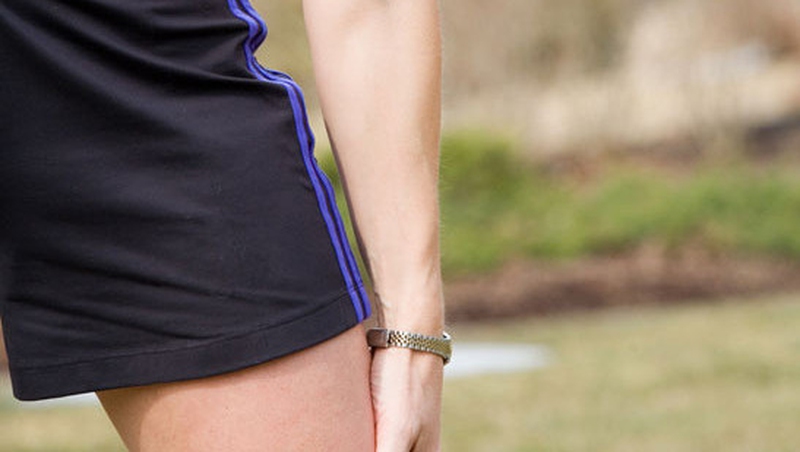When a person starts running for a long period of time, it is very likely to feel an itchy sensation for the first few days. In some rare cases, this sensation could be so bad that the person may have to discontinue his running. Sometimes a medical condition can also be associated with this itchy sensation – referred to as "Exercise Induced Anaphylaxis." However, this problem usually disappears on its own once the affected individual develops a regular habit of running or other forms of physical exercises.

Possible Causes of Itchy Legs When Running
Exercise Beginners
It is normal to feel some kind of itchy sensations over the leg after initiating a new exercise regimen. In most cases, this condition resolves spontaneously within a few days. This is because the blood vessels that are responsible for blood circulation in the lower part of the body dilates in response to the chemicals released by the exercising muscles. This causes a much higher rate of blood flow towards the lower body that helps in activating/ stimulating nerves; thereby producing a vague itchy sensations. Once your body adapts to the new vascular equilibrium, the feeling of itchiness disappears.
Dehydrated Skin
Itchy legs when running can also be caused by dehydration of the skin. In other words, physical environment and surrounding temperature can also play an important role in hemodynamic activities of the skin. If a person is running outdoor, then dry weather can worsen the condition. Moisturizers and proper maintenance of hydration are essential to resolve the complaints due to this cause.
Skin Rash and Irritation
Individuals with sensitive skin can develop rash after mild behavioral changes such as switching to a new soap or body-wash detergent or lotion. This dryness caused by different factors can exaggerate the itching in legs. People with this type of skin are recommended to wear breathable clothes or clothes made up of cotton fabric while running.
Compromised Blood Flow
Individuals with arterial disorders such as peripheral artery disease (PAD) are also likely to experience compromised blood flow in the legs. These individuals can develop more aggressive vasoconstriction while running which can produce tingling sensations in the leg and causes itching. It is better to consult with a health care provider to sort out a functional solution for arterial disease to alleviate the symptoms of itchy legs when running.
Urticarial Rash
Urticarial rash is a condition that is characterized by the appearance of hives like lesions on different parts of the body. These hives are formed as a result of an immune-mediated reaction after an exposure to specific allergens or when the body develops fear, anxiety, and emotional stress. Additionally, strenuous physical activities can also aggravate the itchy feeling in the legs when running. Performing exercise related activities indoor or in cooler environment can significantly reduce the incidence of urticarial rash.
Hygiene
Maintenance of appropriate hygienic conditions such as use of quality or standard soaps, lotions, shower gels, etc. imparts a vital effect in eliminating the condition of itchy legs during running. If a person has developed a rash after changing the product, then it is better to get back to the old product.
Tight Pants or Overdressing
Wearing long pants during running or exercising can aggravate the itchy condition as some fabrics cause friction over skin resulting in severe itching and rash. Also, overdressing can produce hindrance in removal of excessive sweat from the body causing vasoconstriction.
Extreme Temperatures
During winters, if the temperatures become extremely cold then the extremities of the body such as feet and palm also become cold due to compromised blood flow. When a person starts running in this extreme cold temperature sudden increase in blood flow may produce burning and itchy sensations in leg. Running indoor and wearing of appropriate clothes according to the weather is recommended in such case.
Exercise-Induced Anaphylaxis
Exercise-induced anaphylaxis is one of the very rare causes of itchy legs during running. Consult with the physician if the person has developed other symptoms of a severe immune reaction; such as difficulty in breathing, shortness of breath, chest tightness along with itchy legs.
Should I Worry About Itchy Legs when Running?
In general, this condition of itchy legs when running goes off on its own after some interval of time and does not produce any side effects. However, if this condition persists for a longer period of time or worsen with time passing by, then it indicates presence of some arterial or peripheral circulation disorder.
Yet, sometimes the rash condition may be due to clothing, considerations taken for choosing the type of fabric for running also plays an important role.
How Can I Relieve Itchy Legs When Running?
Long Term: Slowly Increasing Distance
First, you need to ensure that you wear properly, so that you legs can handle the running motions. Doctors recommend starting the running from a short period of time then gradually increasing the running distance and time. This will make the body adaptable with the progressive changes and does not produce any significant response such as rash or itchy sensations.
Short Term: Topical Anti-Itch Lotion
Before you run, using some topical anti-itch lotions or moisturizers helps reduce or eliminate such an itchy sensation. This can be applied on a short term basis. Also, this option is recommended to be used on certain occasions, like a last-minute run in the days or weeks prior to conditioning your legs.
Prevention Tips
Before running, try to warm up the body then cool it down for consistency in body temperatures
Allow the body to take deep breaths during running or jogging so that the blood flow will be maintained.
Wear appropriate clothes according to weather.
Patients with exercise-induced anaphylaxis should avoid running and opt for lighter exercises such as swimming.

View All Comments /Add Comment